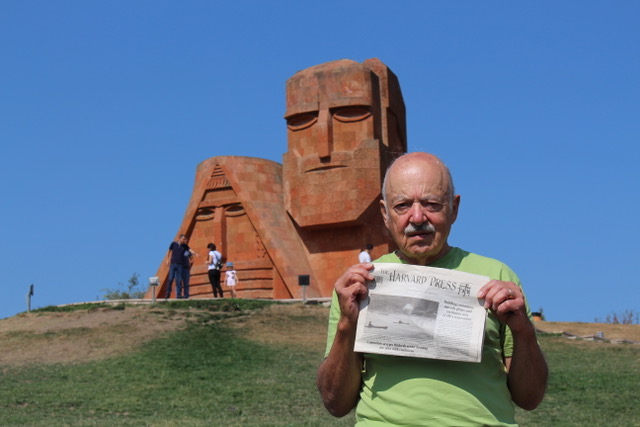Email a copy of 'Unseen Armenia: Varagavank, Nor Varagavank' to a friend

Hovsep Daghdigian
Joseph “Hovsep” Daghdigian is originally from Lowell, MA. His grandparents were from Kharpet in Western Armenia. He is active in the Merrimack Valley community and a former chairman of the AYF CE. Dagdigian is a retired electrical and software engineer with a MS in computer engineering. Dagdigian spends three to five months per year in Armenia and Artsakh exploring sites with his friend Vova Tshagharyan. His adventures are described in his “Unseen Armenia” series of articles. He, with Anahid Yeremian, co-founded the Support Committee for Armenia’s Cosmic Ray Division (SCACRD) in 2000 to support the scientists and students at the Cosmic Ray Division of the Yerevan Physics Institute (now the A. Alikhanyan National Laboratory). He lives in Harvard, MA with his wife Lisa.

Latest posts by Hovsep Daghdigian (see all)
- You can produce it in Armenia - February 17, 2022
- A Home Away from Homes - January 18, 2022
- CRD Continues Research During COVID-19 Pandemic - May 14, 2020

Հրաշալի յօդուած է: Մեծ հաճոյքով կարդացի: Շնորհակալութիւն գրողին:
Varaka Vank
In the 1980´s I visited Varaka Vank several times partly with an Armenian friend, partly with my family. We got to know a Kurdish villager who told us that there is another Armenian Church some hundred Meters up the mountain behind the village.
As the Kurd proposed to lead us up to that church we happily agreed. Walking up there was strenuous and lasted nearly two hours. When we got there I was pretty sure that this ruin was a place of worship of prechristian times, though there were two crosses cut in a stone over the entrance. The church ruin was about two Meters high and filled with soil. There was no roof and the stones were unlike normal Armenian churches not cut. I shot some pictures and later we returned.
Two years later I returned and the Kurd again brought me to this church. Before we got there he told me that some time before several Turkish archaeologists were there and dug inside the church. Besides some little Khachkars with Armenian inscriptions which the archaeologists threw away, they also left a stone with a Cuneiform inscription of only two words and a part of a statue that could have been part of the dress of the statue. I again made some photos and took one of the little Khachkars with me. So for me it was sure that this church was most probably the ruin of a former Urartian temple which the Armenians turned into a church later.
This is very interesting as we know that Krikor Lussavoritch always ordered to destroy old temples and build a church on the same place. Till now the only temple he didn´t order to destroy was the temple of Garni. This temple only survived, because some of Krikors relatives used it.
WR, about a two to two and a half hours hike further up the mountain is Upper Varagavank. This was where the relic was discovered by Todic. There was a pilgrimage route linking Surp Grigor Vank (on the other side of Varag mountain) with Upper Varagavank and Varagavank. There are 19thC photos showing the ruins (Upper Varagavank has been abandoned for centuries) and some pilgrims. There was a rather inaccurate survey of Upper Varagavank done in the 1970s by German researchers. I have been there about 10 times and have never seen anything Urartian there – I think you might be misinterpreting what you saw. The design of its two main churches appear to copy those at lower Varagavank. Those “archaeologists” your Kurd told you about were probably just treasure hunters, and he was probably one of them, and his story just an excuse to account for the damage. I would very much like to see your photos of the site in the 1980s – I was there first in the late 1990s and by then there was no church doorway with crosses above it. Only the lower sides of the doorway survived and even that had been completely destroyed by the late 2000s.